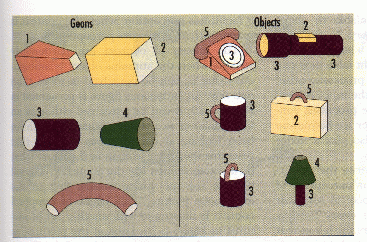Cognitive psychology is a branch of psychology that studies the following inner mental processes: memory, solutions of the problems etc. It is merely based on Gestalt psychology of such thinkers as K. Koffka, M. Wertheimer, J. Piaget and others. The processes the great psychologists were interested in covered all mental activities of a person. Cognitive psychology is comparatively new branch of psychology having been developed since 1950s; this science covered the views of great psychologists who were eager to show and highlight the relationships between our mental processes and surrounding world.
The theory of Gestalt psychology combines the mind and brain and follows the principle that the whole differs form the sum of its parts. As an example of this theory one can examine mathematical formula. The basic theoretical principles of this theory are:
- Principle of totality means that our mind requires each component being a part of dynamic relations;
- Biotic experiment means that real experiments are opposed to the laboratory ones;
- Psychophysical isomorphism describes the correlation of cerebral and conscious activities;
- Experimental analysis phenomenon based on the principle that phenomenon should be the background of everything rather than sensory qualities.
The main principles of Gestalt systems include the following: invariance, reification, emergence and also multistability. One of these principles, the principle of invariance, was covered by outstanding psychologist David Marr in his computational theories.
David Marr concentrated his theories on visual processing and was known as the founder of Computational Neuroscience. Vision as a basic notion of his theories consists of:
- Primal sketch – the extraction of scene components;
- 2.5D sketch – the predominance of texture;
- 3D model – the visualization of the scene.
The theory of 3D object recognition is based on the way the objects are recognized with the help of three-dimensional components which are called geons. According to it all the objects in our memory consist of geons connected with each other. The form of the created objects depends on the connections of the geons. The general theory of 3D object recognition was based on the ideas of David Marr and Keith Nishihara who considered that object features which did not undergo changes, allow illation from 2D to 3D object structure. According to Marr any object is recognized as a combination of generalized cones. Marr’s theory was recognized as the most appropriate and was used for vision researches for many years. The theory of Marr’s object perception can be compared with the theory of Biederman who also devoted his views to the point that object recognition should be examined. Biederman paid much attention to the relations between geons as a way of describing an object. Biederman’s 3d theory explains that every person has about 30.000 different objects but for their recognition one requires only 36 geons. According to his theory the secondary role in object perception is played by color and texture. Geons being in structural relationships can determine an object otherwise they are considered to be primitives of an object. He states that the arrangement of 3D shaped geons represents the vision of any object. The appearance of this theory caused a lot of contradictions between Marr’s vision and Biederman’s one. Marr believed that a lot of objects have recognizable silhouettes which are certainly based on the vision of the object from the right angles point of view. Marr explains that his top-down approaches overlap with the paradigm which means that object descriptions are considered to be viewer independent. In comparison with Biederman Marr’s 3D theory of object recognition is an excellent framework but it cannot be considered as one of the most adequate approaches of viewing human mental representation, because it does not result perfect vision performing. Biederman managed to illustrate a precise mental process of object recognition describing the interaction of geons and objects.

Analyzing their theories one can say that our visual system includes processing machinery that represents a kind of a visual image as a combination of primitives representing different kinds of objects; objects relations are fixed with the help of geons which are joined with each other and represent a connecting structure.
Perception is a notion denoting the process of awareness. A lot of theories are closely connected with this process. There are two big groups of perception theories: Bottom-up and Top-down. Bottom-up theories are based on the fact that everything from the primitive features up to the inner representation is built up by perception without the influence of the higher cognitive processes. This group covers the following theories: the theory of direct perception which views perception as a consequence of stimulus energy; prototype theory views a prototype as a the object average; feature theory considers that perception is a combination of features that are joined together; template theory compares perceived objects with templates; structural theory considers geons as the basic features. Top-down theories support the opinion that the formation of our perceptual experience is affected by context and knowledge.
Cognitive psychology managed to cover a lot of related sciences and the material for its researches was benefited from different branches such as artificial intelligence and many others.
References
Koffka, K, (1935), Principles of Gestalt Psychology, New York, Harcourt.
Marr, D., (1982), Vision: A computational investigation into the human representation and processing of visual information. San Francisco, CA: Freeman.